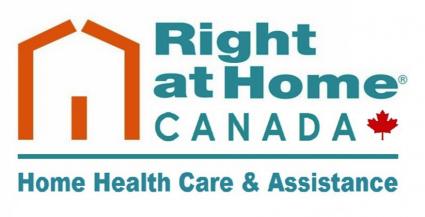Absolutely all of the above. Getting older and reaching retirement does not mean you retire your Healthy Body. Staying active in the golden years can mean anything from a brisk walk in the neighborhood or golfing, to a long hike in the mountains and everything in between.
Most people can exercise throughout their lives, even with conditions like arthritis, heart disease and diabetes. In many cases, physical activity may improve these health conditions. For each decade past age 30, inactive people can lose an average of 3 to 5 percent of their muscle mass, and in turn this will cause loss of strength and mobility.
Regular exercise for the elderly (not just a batch of home or yard cleaning) is worth its weight in healthful benefits!
See below for just some of the benefits of moving your Healthy Body everyday:
-
Less pain
-
More flexible joints
-
Increased blood circulation
-
Improved heart health
-
Strengthened bone density
-
Weight maintenance or loss
-
Better sleep
-
Increased mental sharpness
“We see time and again how planned exercise and even the everyday activities like gardening and household chores keep elders moving and engaged in life,” said Nancy Esson, Client Relations Georgian Triangle/Barrie, “Plus, routine physical activity is definatly mood-boosting and can make a person happier, healthier and more relaxed to be around. In a way, staying active benefits everyone.”
People ages 50 and older are instructed to check with their doctor before starting a regular activity routine. The elderly who experience issues with a heart condition, breathing, joint inflammation, blood pressure, dizziness or fainting should receive medical approval before increasing physical activity.
A balanced fitness approach for older adults includes the following:
Endurance – Cardio or endurance activities such as brisk walking, jogging, biking, swimming or dancing builds physical resiliency. If needed, break exercise into 10-minute intervals.
Strength – Resistance bands, weight lifting and wall pushups are a few ways to build up muscles. Some even get a personal trainer to build strength. Elders with increased strength experience greater mobility and vitality for activities like mowing the yard or walking the dog.
Balance – Tai chi, Pilates and yoga are excellent balance exercises as well as simply balancing on one foot behind a sturdy chair. Walking heel to toe and steadying on an exercise ball are also practical ways to increase core Healthy Body stability.
Flexibility – Stretching one’s muscles helps the entire Healthy Body stay limber and move more freely. This definatly helps with their over all day to day movement.
For those recovering from surgery or illness or restricted from walking or putting undue strain on their joints, chair exercises can help. Simple chair exercises include doing arm circles, toe taps, and stomach and gluteus squeezes. Chair exercises can even be done outdoors on the patio or in the flower garden, all while absorbing essential vitamin D from the sun.
In conclusion, whether a person is 18 or 88, staying consistent with exercise is a challenge of motivation and discipline. What if an ageing loved one brushes off the idea of routine exercise?
How do I get my elderly family members to be active?
There are several ways to coax older adults on to greater fitness health see Esson notes below:
Explain the great health benefits. Encourage elders with the facts of how regular physical activity is essential for better Healthy Living as they age. Highlight the exercise advantages of easing joint stiffness and pain and improving energy and outlook. No one is too old to exercise.
Start small. The elderly who have been inactive or have slowed down over the years need to gradually increase exercise challenges. Instead of overdoing it the first week and giving up entirely, opt for moderate pacing with activity.
Be realistic. Heading to an aqua fitness class or zumba class several days a week will not match every older person’s interest or ability level. Make a written exercise plan that is doable and attainable and modify it as needed. Instead of aiming for half marathons in six months, just begin with strolls, then vigorous walks.
Choose the enjoyable. Exercise can be fun and something older adults truly look forward to each week. They can make it into a social with friends. Suggest a variety of options and let your elder choose his or her top two or three preferred activities.
Garner the support of others. Sometimes enlisting an exercise partner helps with exercise consistency and lifts the spirits with conversation and friendship. For elders who receive a doctor-approved exercise program, Right at Home adult home care professionals can offer safety supervision.
A little soreness and discomfort is normal with active exercise, but if a person feels pain, it’s time to stop the exercise and rest. If the pain persists, always consult with a fitness or medical professional before continuing physical activities.
Furthering the wellness of elder adults, a number of provincial and local organizations, publications and websites offer fitness and nutrition resources. Hospitals, elderly and community centers, city recreation departments, fitness clubs and area parks often provide a variety of safe, affordable exercise options for older citizens including group classes, exercise stations and modified hiking trails.
With a world of opportunities to stay active, now is the time for elder adults to refresh a regular physical exercise routine to keep up with the grandkids at the park or a dance at the next birthday soirée. Core conditioning class or tennis, anyone?



